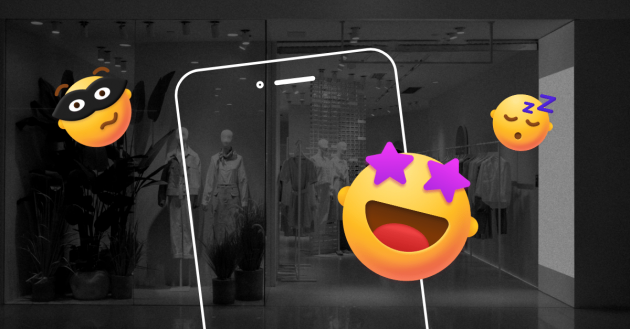The battle for customers attention is fiercer than ever, so how can you give yourself an edge? Smart retailers are using Augmented Reality games to engage and incentivise customers.
One of the key benefits of Augmented Reality (AR) compared with Virtual Reality is that AR doesn't require the use of any special headsets. For AR, all your customers need is the ability to download an app onto a mobile phone, and then they can enjoy a fun alternative reality in the real world.
If you've not played with AR before, we'll explain how it works.
AR Retail Games With Results in Mind
When trying to choose the type of AR retail game that'll lead to the best results, you'll need to consider a few things:
-
Target customer demographic
-
Their likely level of mobile app gaming experience
-
Their motivation for playing the game
Once you have that information, you can then decide on the basics of gameplay, design and rewards.
For example, if your shop offers haute couture women s fashion then the AR game needs to look and feel completely different to one for a shop that sells discount groceries.
Choosing the Right Rewards
For some games, the customers might just find fun in the experience of playing it. If your game is particularly complex and innovative, you could even offer it as a perk as part of a membership scheme.
But the key ways gamification engages customers is by getting them to explore your shop or to highlight your product range - whether you sell in the real world, online, or both. That s why you should think carefully about the goal of your game.
If it's to encourage them to make low-priced purchases swiftly, then you'll want a fast game that leads to a discount code or other promotional offer.
But if your goal is to encourage customers to explore your shop to discover more of what you offer, then gameplay might be a little more involved.
Rewards tend to work best when there's a perceived monetary value at the end, whether it's a discount code, voucher or points that can ultimately accrue and lead to a purchase. Or perhaps they could accrue stamps in their loyalty app every time they play, earning a free coffee or another small token.
In some cases, the reward could simply be seeing themselves listed on the leaderboard at the end.
What type of AR games work best for retailers?
Below are some ideas for how to gamify your shopping experience using retailer AR games.
Retail In-Store AR game
If you have a physical shop, an in-store AR is an excellent way to encourage customers to come and explore. It can serve as an incentive both to get them to enter the shop, and then to see what you have available throughout it.
To play, they download either a standalone app or your store's app. It's ideal if your shop offers free wifi to make this easy.
From the app, they then choose to play the game, which requires them to hold up their phone and move it around the shop. AR images will then pop up on the phone screen, overlaid on the real-world image of your shop. If you've ever played Pokemon Go, you'll have an idea of what we're talking about.
We created a sample game called Emoji Hunter. See the images below:
In Emoji Hunter, a customer holds their phone up in your shop to try to find specific emojis that pop up on their screen. They have to move around the shop to find the designated emojis in a set period of time and without clicking too many of the wrong emojis.
Retail at-home AR game
The objective of this type of game is usually to help familiarise customers with your products. It works well for the launch of a new product, but can also be used to show the breadth of products, using different tokens, game icons and AR game elements.
With this, you put your products in the customer's own environment, whether that's their home, garden or wherever they happen to be playing. They open your app, hold up the phone, then see an overlay of the gaming elements in the real world around them.
You might have seen fun AI videos of people with tigers, unicorns or dinosaurs in their living room or kitchen. This is basically the same idea, except it's your game and products they'll see in their home.
We created an example that showcased the possibility of this with our Presto Gusto game, which could work either in a shop setting, as above, or in a user s home. The goal is to shoot coffee capsules into the mouth of a coffee machine. As each coffee capsule is a different variety, it's a subtle way to alert users to the array of options available, while also bringing the machines themselves to life for the player.
Retail Mobile-to-Website AR game
Whether your goal is to get more people to download your ecommerce app or to have them explore your retail website, this joined-up concept works well. You create a game, typically within your own retailer app, but potentially as a standalone, then incentivise customers to download and play.
Immersive tech of this type utilises elements that bring the app and website together. You could create a puzzle game on your website with clues, such as flashing lights or glowing auras around the object, that appear when the users hold their phone to the screen.
ADAMAPP - the AR Experts
At ADAMAPP , we've been working with retailers on AR projects for years. From in-store AR Navigation to mobile AR scanners, and tools to help customers visualise bespoke customisation of your products , we've used AR to help design solutions for a wide variety of client areas.
If you'd like to talk about an AR retail game or another AR project, get in touch.

